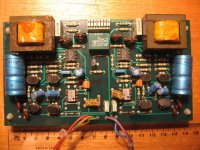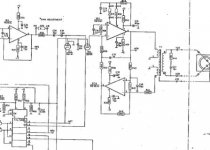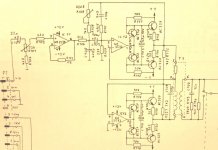So you like the NOS mod for the TDA1540 or you would rather not use it?
Flavio,
I really like the 1540 in NOS mode, I'm prepared to give up some of the microdetail. I'm reclocking one of the data lines to the DAC and I find the sound to be very natural. As indicated earlier I prefer it to a TDA1541A S1 in my Marantz CD 94 Mk II. The CD 63 may be bulit like a tank, but I'm sure a diyer can do better with some structural mods.
Andy,
You are correct, the board I have is from a Studer A725, schematic is very similar to the output of the Philips LHH2000. I'll take a photo of the board and post it in a day or so.
Oshifis,
I agree with you regarding the ceramic version but Ssshhhh, we don't want all those 1540 fanatics out there hunting down this version to extinction.
Cheers,
Richard
and the Studer A725 output schematic. Note that the LHH2000 does not use the additional transistors.
Isn't the I/V conversion done at the resistor on the feedback of IC11 opamp?? Although the resistor value is unknown!! ("OE"???!?!?!)
Last edited:
Isn't the I/V conversion done at the resistor on the feedback of IC11 opamp?? Although the resistor value is unknown!! ("OE"???!?!?!)
No the IV is not in the picture.
I would say, remove the opamp, put in a socket, solder on a socket a THS4032, cool it with a small aluminium sink (with cyanoacrylate glued on) put this smd opamp in the socket, and enjoy your 14 bit downsampling machine. The THS can run on +/- 15V max prepare on that. But you will be astonisched. For coupling cap remove the lytic and wire from the on pcb tracks a motor starter cap from around 5.5 uF.
Last edited:
- Status
- Not open for further replies.
- Home
- Source & Line
- Digital Source
- Philips LHH2000's secret output (versus CD100 & others with TDA1540)


